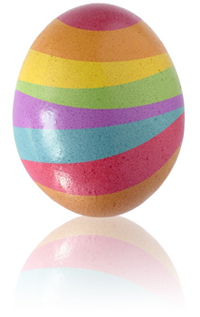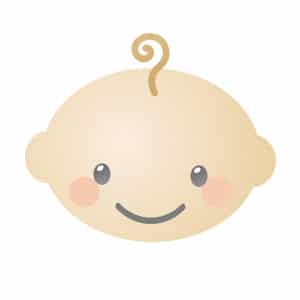Last updated on August 20th, 2022 at 12:28 am
 Kathy had written the other day about Easter creeping up on us and where you can find natural and organic candy. Some people may not celebrate Easter for religious reasons, or maybe you just don’t feel that you need to be a part of the commercialism aspect. However, for those that do, I’m sure you’re wondering how to minimize your impact to the landfill. My son is a little young for Easter and we’re not religious people, but I do like the aspect of doing something as a family, especially the crafty part of Easter. And OK, maybe there’s also a part of me that wants a little bit of candy too!
Kathy had written the other day about Easter creeping up on us and where you can find natural and organic candy. Some people may not celebrate Easter for religious reasons, or maybe you just don’t feel that you need to be a part of the commercialism aspect. However, for those that do, I’m sure you’re wondering how to minimize your impact to the landfill. My son is a little young for Easter and we’re not religious people, but I do like the aspect of doing something as a family, especially the crafty part of Easter. And OK, maybe there’s also a part of me that wants a little bit of candy too!
We try to reduce and reuse as much as we can, so when it came time to purchase an Easter basket, I wanted something that I could reuse for years to come. I came across many beautiful Easter baskets on Etsy that are not only affordable, but are definitely something that fits in with the need for tradition.
Easter grass: What Easter basket would be complete without some Easter grass? I went looking for some natural recycled alternatives to the plastic stuff that you can buy anywhere. There’s tons of great options like, shredded recycled paper, which you can either buy or make yourself if you have your own paper shredder. If it gets destroyed, you can recycle it, or you can reuse it until it’s worn out. The other thing I came across that’s eco-friendly and all natural, is raffia fiber. Raffia is made from the raffia palm and then turned into rope or straw. It makes a great packing material, but it’d be great for an Easter basket and durable enough that you could reuse it for years.
Egg Dyes: And what about Easter dyes? I’m not a fan of artificial colors. I try to use all natural food coloring. I will admit that all natural food coloring is much different than the commercial Easter dyes that you use. Even making your own natural Easter dyes will result in much more muted pastel colors, instead of vibrant bold colors we were used to as kids, but this might make for a fun science project for older toddlers and younger children. Again, it doesn’t have to be about the commercialism and getting more unneeded presents. It can be more about spending the time together.
Oh OK, and the candy too!


